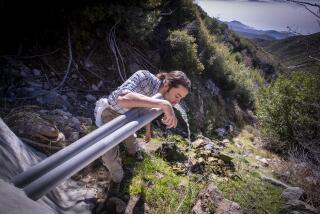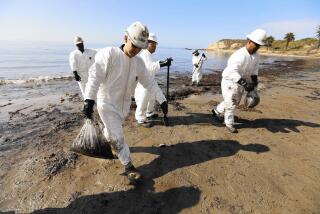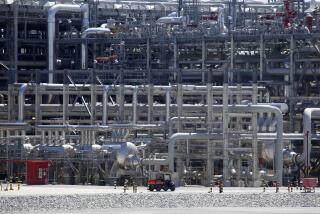Keystone XL pipeline: Canadian firm seeks U.S. permission, again
A Canadian company has come forward with a new application for the hotly debated Keystone XL pipeline, once again placing a crucial decision over jobs, energy and the environment in front of the Obama administration, which rejected an earlier bid to build the $7-billion structure.
TransCanada filed its application Friday with the U.S. State Department, which must determine whether the international pipeline -- designed to bring diluted bitumen from the tar sands of Alberta, Canada, to a linking point in Steele City, Neb. -- is in the U.S. national interest. Additional oil would be transported from Montana and North Dakota.
The company is proceeding separately with a domestic permit to build a second section of the pipeline from Oklahoma to the Texas Gulf Coast. That effort is in large part a result of troubles the company ran into earlier this year trying to get approval for the entire pipeline as a single project.
The U.S. Army Corps of Engineers has 45 days to make a decision on that southern route, while State Department officials said they expect to make a decision on the northern proposal in early 2013.
Though President Obama rejected the initial permit application earlier this year -- pushing back against attempts in Congress to rush the project through -- the president has welcomed TransCanada’s application for the southern route.
A proposed new route for the northern portion through Nebraska -- one that would avoid more of the sensitive Sandhills region -- could alleviate some of the administration’s previous concerns, though ranchers and conservationists in Nebraska say the new route wouldn’t be much better than the old one.
“This pipeline not only still crosses the Sandhills and sandy soil, but it still crosses the Ogallala aquifer, which is the largest source of fresh water not only in the United States, but around the world,” Jane Kleeb of BOLD Nebraska, a group opposing the pipeline, said in a teleconference with reporters. “There is no amount of jobs that can replace the clean water that our state relies on for the main economic driver, which is agriculture.”
Pipeline supporters say Keystone XL could ultimately replace 40% of the oil the U.S. currently imports from the Middle East and Venezuela and inject up to $20 billion into the U.S. economy. The State Department estimates that its construction could create up to 6,000 jobs, though TransCanada says the number of jobs, direct and indirect, could reach 20,000.
TransCanada estimates that building the northern section of the facility will cost $5.3 billion; the company hopes to bring it online by late 2013 or early 2014. The southern portion could be in service by mid- to late 2013.
“Our application for a Presidential Permit builds on more than three years of environmental review already conducted for Keystone XL,” TransCanada president Russ Girling said in a statement. “It was the most comprehensive process ever for a cross-border pipeline and that work should allow our cross-border permit to be processed expeditiously and a decision made once a new route in Nebraska is determined.”
The American Petroleum Institute said it’s urging the administration to approve the new permit without delay.
“The president should take this opportunity to approve the entire pipeline to demonstrate he is serious about an ‘all the above’ energy strategy,” the institute’s executive vice president, Marty Durbin, said in a statement. “There is no legitimate reason for delaying this project any further. Keystone XL is a job creator and will bring more reliable Canadian oil to the market, which could help bring downward pressure on prices at the pump.”
A key question now is whether the State Department will rely on the existing environmental impact statement (prepared for TransCanada’s earlier, failed application); prepare a new one; or use some of the old one along with additional studies.
TransCanada says most of the crucial studies are already done and should be relied on. But critics have complained that the contractor that prepared much of the original studies, Cardno Entrix, had a conflict of interest because of previous work with TransCanada; they also say the review was deficient in several respects.
“It’s really important that the State Department take a fresh look at the pipeline application,” said Susan Casey-Lefkowitz of the Natural Resources Defense Council. She said it is important for the new reviews to take a closer look, for example, at how delivering more carbon-intensive tar sands oil to market will effect the pace of climate change.
“The company’s ‘new’ application is nothing but a rehash, riddled with the same environmental risks that raise the same unanswered questions while providing no new rationale for why it should be built,” she said in a statement.
ALSO:
Turtle with unique mark -- boy’s initials -- found after 47 years
Kent State shootings: Survivors want Eric Holder to examine tape
AP fired reporter who broke news of WWII’s end; now it apologizes
More to Read
Sign up for Essential California
The most important California stories and recommendations in your inbox every morning.
You may occasionally receive promotional content from the Los Angeles Times.










